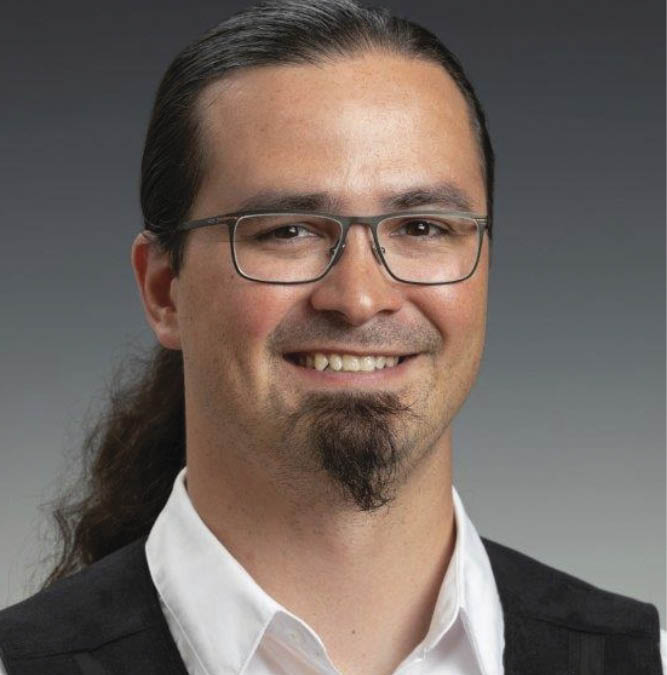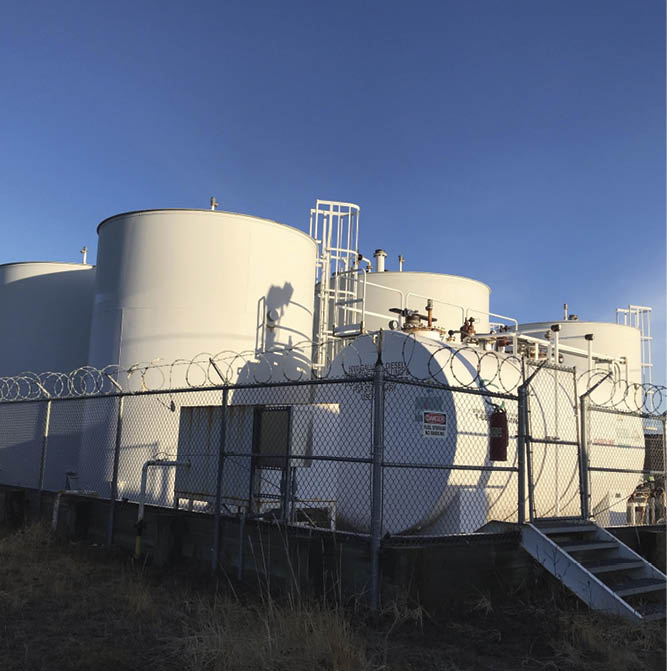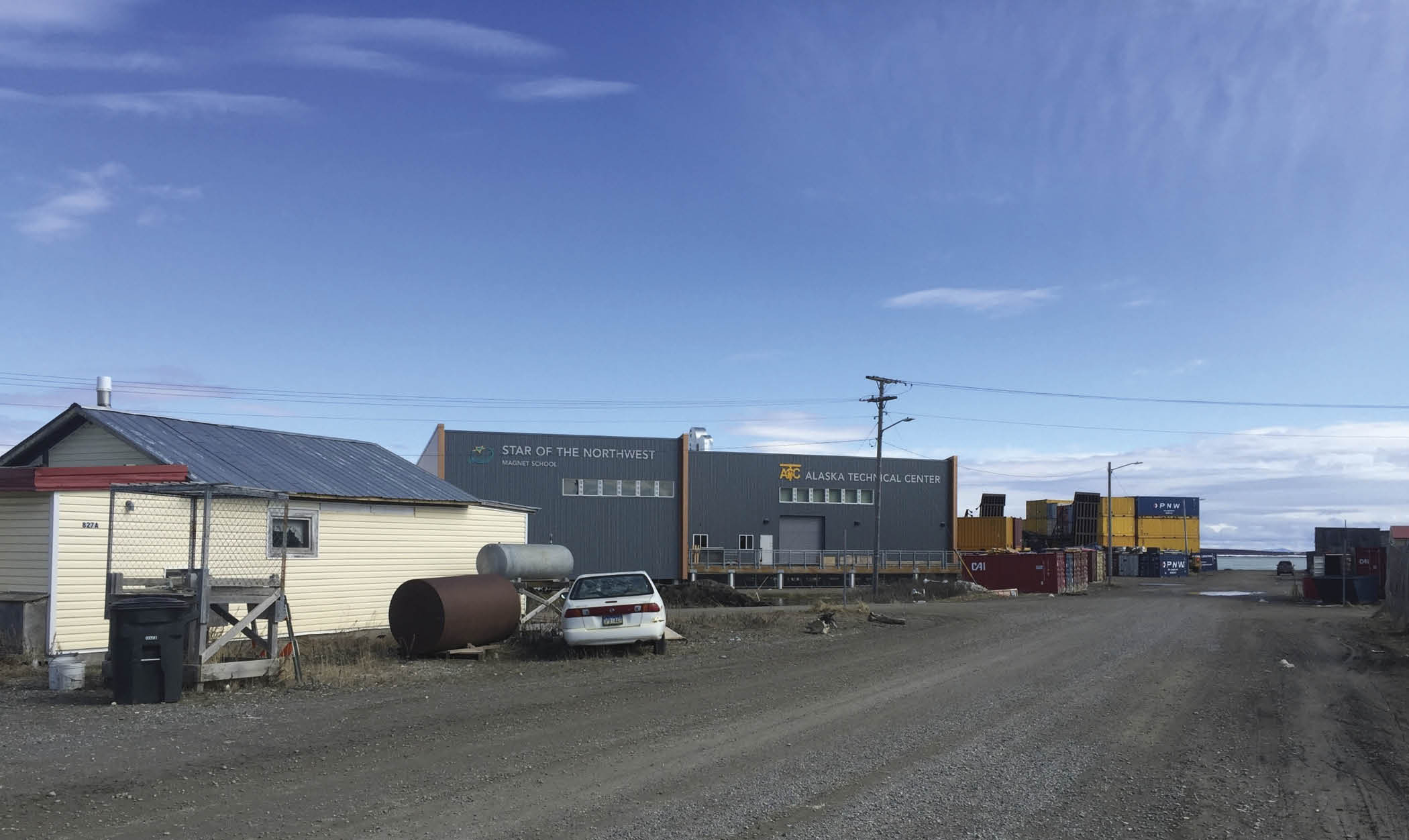ALASKA NATIVE
oice of the Arctic Iñupiat formed in 2015 as a 501(c)(4) nonprofit organization. Working with twenty-four Alaska Native regional and village corporations, associations, and municipal governments in the North Slope Borough, the Voice is a network offering a unified voice for the area and its people.
The priorities and goals of the Voice are forward-thinking, seeking to mitigate current challenges and provide a long-term plan for the region. The most recent plan is named Vision 2050, which addresses subsistence, language and culture, healthcare, transportation, housing and infrastructure, resource development, and economic sustainability.

Nagruk Harcharek
Voice of the Arctic Iñupiat
At the Voice, Harcharek seeks to expand on what he learned living and working in the Arctic. He says his upbringing as a youth subsisting, hunting, and sharing remains a vital part of how he lives his life today.
“There is so much opportunity for us on the North Slope, and to help realize those opportunities is something I am looking forward to taking on.”
“As a youth, and even today, my freezer is filled with caribou, fish, and whale,” Harcharek says. “It’s very rare, even living in Anchorage, that I go to the store for a steak or chicken. For many, it is cost prohibitive not to include subsistence foods.”
Applying his household grocery budget toward hunting, fishing, and whaling, Harcharek obtains a surplus of traditional foods to share with those who cannot hunt.
“We stock our freezer, but much of the food we are getting is sent out,” Harcharek says. “We need that traditional sustenance to maintain the cultural connection and spirituality.”
USGS
USGS

“When there are decisions going to be made surrounding any of the subsistence species we rely on… the science is going to be done by us and with us.”
“When there are decisions going to be made surrounding any of the subsistence species we rely on,” Harcharek says, “the science is going to be done by us and with us.”
Self-determination in wildlife management is a big change from prior generations. “In the ‘70s, there was a moratorium on whaling,” he says. “This was done as a result of bad science. Now, whenever there is a decision to be made, we are going to come prepared with our own science, our own research. We are going to make sure our rights are protected.”
According to the Federal Subsistence Management Program, the current rural subsistence harvest is about 295 pounds of food per person per year. That is more than the US average consumption of 255 pounds of domestic meat, fish, and poultry per year.
Retail foods face two significant obstacles in the Arctic: distance and climate. Without roads, supplies travel by air or by seasonal barge. Along the way, perishables must be well insulated from -60°F temperatures during the long winter.
Keeping goods at a consistent temperature requires very specialized understanding of how that will be accomplished. Therefore, the Voice has identified transportation as a priority and is adamant about being part of the conversation when the region’s communities are involved.
A fuel facility in Golovin, near Nome.
State of Alaska
A fuel facility in Golovin, near Nome.
State of Alaska

Borrowing lessons from the Arctic region to create education systems that ground students in their own cultures, Indigenous or otherwise, is the theme of a textbook published online in January and co-edited by Diane Hirshberg, professor of education policy at UAA and director of the Institute of Social and Economic Research.
Introduction: Education, Equity and Inclusion for a Sustainable North compiles views from researchers in Russia, Finland, Sweden, Norway, the Faeroe Islands, Greenland, Canada, and Alaska. Its purpose is to support teachers in addressing diversity and inclusion and seeking solutions to structural and geographic challenges to education in the circumpolar North.
Those challenges have been holding back educational success for many Alaska Native students in primary and secondary education. American Indian/Alaska Native high school students have the highest dropout rate at 9.6 percent, according to the National Center for Education Statistics (NCES). This is much higher than the overall dropout rate of 5.1 percent.
The US Department of Education and NCES are the primary federal entities for collecting, analyzing, and reporting data related to education in the United States. For 2021 published data nationwide, the overall dropout rate decreased from 8.3 percent in 2010 to 5.1 percent in 2019. During this time, the dropout rate declined for 16-to 24-year-olds who were American Indian/Alaska Native from 15.4 percent to 9.6 percent, an improvement, however, significantly disproportionate to the 5.1 percent average.
Hirshberg co-authored a chapter with Douglas Cost and Edward Alexander titled “Adaptation Isn’t Just for the Tundra: Rethinking Teaching and Schooling in Alaska’s Arctic.” The chapter examines recent proposals to extend more tribal authority over rural schools and reflects on whether selfdetermination would change education for the better.
“I really hope that our work can help policymakers realize that excellence in education is more than just good scores on international standardized tests,” Hirshberg says. “It also means supporting heritage language maintenance alongside the linguistic diversity brought by newcomers; ensuring that Indigenous epistemologies and pedagogies are privileged alongside Western ways of teaching and learning; and that the solution to improving graduation rates and teacher retention is schooling in which all students see themselves in the curriculum and communities see the schools and teachers as embracing local knowledge alongside the knowledge brought from outside.”
Addressing diversity and inclusion in the classroom—including the importance of language and a healthy sense of identity and creating solutions to structural and geographical challenges in education in the circumpolar north— has been an ongoing concern and dynamic that continues to impact student success.
Northwest Arctic Borough School District hosts the Alaska Technical Center in Kotzebue for training in construction, process technology, culinary arts, professional skills, and nursing.
State of Alaska
Northwest Arctic Borough School District hosts the Alaska Technical Center in Kotzebue for training in construction, process technology, culinary arts, professional skills, and nursing.
State of Alaska

“The solution to improving graduation rates and teacher retention is schooling in which all students see themselves in the curriculum and communities see the schools and teachers as embracing local knowledge alongside the knowledge brought from outside.”
Living in a village without adequate sewage and water treatment has been identified as a contributing factor to several negative and disproportionate health-related issues. To improve the health of rural Alaska communities, the Alaska Department of Environmental Conservation, in coordination with tribal, state, and federal agencies, is seeking better and more affordable ways to deliver drinking water and sewage disposal services.
Even in homes with indoor plumbing, Arctic families find themselves waiting in line to use the bathroom. Too many people in not enough homes is another challenge that the Voice is trying to address. According to a 2017 assessment by ASRC and the Alaska Housing Finance Corporation, 544 occupied units were estimated to be either overcrowded (15 percent) or severely overcrowded (12 percent). This is more than eight times the national average and the fourth most overcrowded of any region in the state.
An estimated 768 homes built before the ‘80s in the Arctic Slope region have yet to be retrofitted through a state program in the past ten years. Approximately 138 of the homes, or 7 percent, need complete kitchens, and approximately 216, or 11 percent, need complete bathrooms.
The region’s Taġiuġmiullu Nunamiullu Housing Authority directs affordable housing programs. However, there has been a waiting list of more than 300 applicants. Providing new affordable housing is difficult because the cost of shipping building materials, and providing utility infrastructure in the region is exceptionally expensive.
“There is so much opportunity for us on the North Slope,” says Harcharek in his welcome message on the Voice’s website, “and to help realize those opportunities is something I am looking forward to taking on.”
At the surface, the Voice and its Vision 2050 plan can read like a typical corporate publication, yet each priority seeks to address vital issues. The Voice seeks to be at the table when decisions are made to ensure the development of North Slope natural resources in a safe and responsible manner as well as promoting Iñupiat stewardship of Alaska’s Arctic region. ![]()